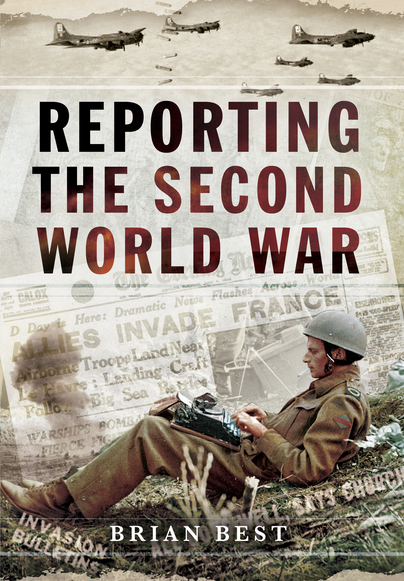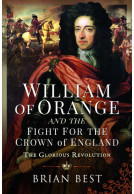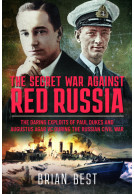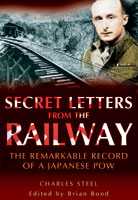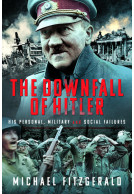Reporting the Second World War (ePub)
Imprint: Pen & Sword Military
File Size: 16.1 MB (.epub)
Pages: 223
ISBN: 9781473870666
Published: 2nd September 2015
| Other formats available - Buy the Hardback and get the eBook for free! | Price |
|---|---|
| Reporting the Second World War Hardback Add to Basket | £19.99 |
After a slow start, the Second World War produced an enormous number of war correspondents. Correspondents like Ernest Hemingway, John Dos Passos and George Orwell were all inspired to put their experiences on the printed page. Hemingway and his wife, Martha Gellhorn, went on to cover the D-Day Landings and the final victory in Germany.
The British Broadcasting Corporation was the first to use live broadcasts from the front. Encouraged by the RAF's favourable acceptance of Richard Dimbleby's commentary from the flight deck of a Lancaster bomber over Berlin, which was piloted by the legendary Guy Gibson VC, the public's reaction was overwhelmingly positive.
Increasingly, war correspondents sought danger by flying bombing missions, parachuting with airborne forces and taking part in amphibious attacks against the enemy. Many were killed in plane crashes, by sniper fire and freak accidents. Several performed acts of bravery recognized with a 'Mentioned in Despatches' and in some cases, a gallantry award. As a consequence, many were killed – the United States alone has a memorial dedicated to more than eighty.
Although there was much 'purple prose' reporting, there was also some excellent writing, which has stood the test of time. To name a few such journalists like Alan Moorehead, Robert Sherrod, Richard Tregaskis, Osmar White, Martha Gellhorn and Chester Wilmot, who were all perceptive eyewitnesses to the world's greatest war.
Reporting the Second World War is an in-depth account of the war, as seen through the newspapers of the day. It illustrates the momentous efforts of the correspondents and is a timely reminder of their dedication, skill and bravery in reporting the Second World War.
As seen in
Stamford Living
Reporting the Second World War extends historian Brian Best’s work on World War I, Reporting from the Front : War Reporters during the Great War, and smoothly transitions between the two through a brief prologue. Not surprisingly, the book has the same strengths and weaknesses as its predecessor.
Cercles - Michael S. Sweeney
Once again, Best synthesises a compelling summary about war correspondents and photographers from secondary sources and sprinkles in colorful and insightful quotations from contemporary mass media. As such, Reporting the Second World War provides a strong overview of the challenges, triumphs and costs of wartime journalism.
Best has admirably culled many of the strongest passages from dispatches and memoirs, including Edward R. Murrow’s broadcast accounts of the bombing of London and Robert Capa’s bravery in taking photographs of the D-day landings. Compared with other books of wartime journalism history, Best uses quotes liberally to re-create the texture of news as Western audiences received it...
... the range of material covered is impressive enough that even scholars of World War II journalism will find surprises scattered among the pages. One such discovery is that Eddy Ward of the BBC took a microphone and recording equipment to the front lines of the
Finnish-Soviet war, making him the first broadcast journalist to do so on the scene of live combat. Another is the intense training regimen of correspondents selected to go ashore at Normandy, including instruction in gunnery, signals, reconnaissance, aircraft and tank recognition, map-reading, parachute jumps, assault techniques, and field survival. “There was probably never a fitter corps of pressmen,” Best writes [146].
Given the broad arc of the war and the subject matter, Best deserves credit for creating an engaging but far from comprehensive narrative introduction to war correspondents in the field. The book would be a good primer for a scholar approaching this subject for the first time.
As reviewed in
Lancashire Life Magazine
Brian Best looks at the stories of the people who reported the war. An engaging and well researched new angle on World War II.
History of War Magazine Issue 24
When you read accounts like this, it's easy to see why some correspondents faced the problems that they did. With the amount of books dedicated to World War II out there, new books on the subject need to not only be well researched and engaging, they need to cover new ground, and it's certainly safe to say that this book does this. It's interesting that so few books are dedicated to the people who informed much of what we understand about history's most destructive conflict - well, now there's at least one more.
All About History Magazine
About Brian Best
BRIAN BEST has an honours degree in South African History and is a Fellow of the Royal Geographical Society. He was the founder of the Victoria Cross Society and edited its Journal for many years. Brian also lectures about the Victoria Cross and War Art. He is married and lives in Rutland.







